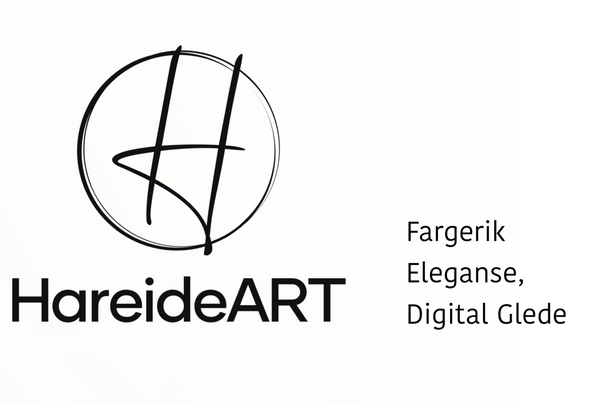In most aspects of life today, technology is becoming increasingly important in the way we do things. From buying food, plane tickets, houses and cars, to making art. We face ever-increasing pressure to adopt, adapt and change the way we do things.
Within art today, there is the concept of traditional art, and now also digital art. Perhaps many people think of NFT when the term digital art is mentioned, but digital art and digital art printing are today equated with traditional graphic printing.
I allow myself to reproduce a picture of Nina Due, which is for sale at Fineart.no

So one wonders if digital art can be real art? For all new things that get a digital solution, there is a certain level of resistance. This is also evident from those who love traditional art practice, but often it is ignorance about digital art that manifests itself, and ignorance that digital art has a lot to offer us all. Nina Due's photo. "Reading", is real art.
Digital art vs traditional art
Although they may appear to be vastly different in terms of how the images are created and the final look of the artwork, traditional and digital techniques have many overlaps. Traditional painting requires the use of physical media and tools, while digital artists use technology to recreate these effects and to create new and exciting ones.
It would be a mistake to think that digital artwork requires less skill or time than more traditional art forms, the biggest difference lies in the way you need to think about your work.
Traditional art
Traditional art has many advantages and disadvantages compared to digital media. Many believe that a practical connection can bring more of your soul to your work, and will create a more tactile and interesting experience for the viewer. A digitally produced work of art does not consist of the same physical craftsmanship that is required for the production of a traditional art product.
Traditional art is also seen as more unique than digital media. Each work of art is completely unique, leading many to believe that traditional works of art have more value, financially and spiritually. Traditional works of art involve many media, such as sculpture, painting, sewing, printing and much much more. As such, you have the opportunity to create and experiment with traditional art media to create forms that are unique.
Traditional art media also encourage problem solving and versatility in artists, perhaps more than digital creations do. Although they are versatile, mistakes you can make with traditional forms like paint and sculpture are not easy to fix or remove. Although this may seem like a disadvantage, it forces the artist to adapt, often resulting in exciting discoveries.
A digital graphic is considered an original graphic when it comes to an original work that is created digitally, it cannot be a reprint of an existing work of art.
Digital art
Just like traditional art forms, digital art has its upsides and downsides. Many of the benefits of digital art forms relate to access, convenience and experimentation. Digital art media allows you to combine the effects of many physical media with one device. While drawing devices may not be particularly affordable initially, they pay for themselves over time.
Digital technologies are also more convenient and portable. You can carry the entire art toolbox with you almost anywhere, and you will always be ready to create. You can also easily replicate and share your creations. However, digital technologies are unfamiliar to many artists, so the learning process can take some time.
Digital art is also more forgiving than traditional art media. Any error can be easily changed with a keystroke. You can erase and redraw shapes until you perfect them. Drawing with a digital medium allows you much more exploration and experimentation.
You can try different techniques and styles and if they don't work, you haven't wasted materials and you can just try again. There are limitless possibilities with digital art, which is wonderful, but can also lead to creative paralysis. With so many options, it can be overwhelming and difficult to know where to start.
Some purists also believe that this ease of use can make digital art too easy, but this is not the case as the tools require many unique and sometimes difficult skills and techniques.
Creating good quality digital art requires the same amount of skill, talent, originality, knowledge and effort as any other traditional artwork. Every artist must learn to master their tools regardless of medium. Therefore, it is reasonable to say that digital art can be called "real" art.
If by digital art you mean images with an artistic expression and not commercial art such as illustrations, graphic design or graphic design of websites, then the same conditions apply to the digital artist as to the traditional artist.
Art in any medium, traditional or digital, is generally not profitable until you are well established and represented by galleries. Even then, you will have to pay your agent and the gallerists to send you things to the collectors. Everyone takes part of your talent.
Most other works of art fall into the commercial realm and can be traded as a commodity. You offer a product and treat it like a business. Remember that.




1 comment
verdens verste ting jeg har opplevd